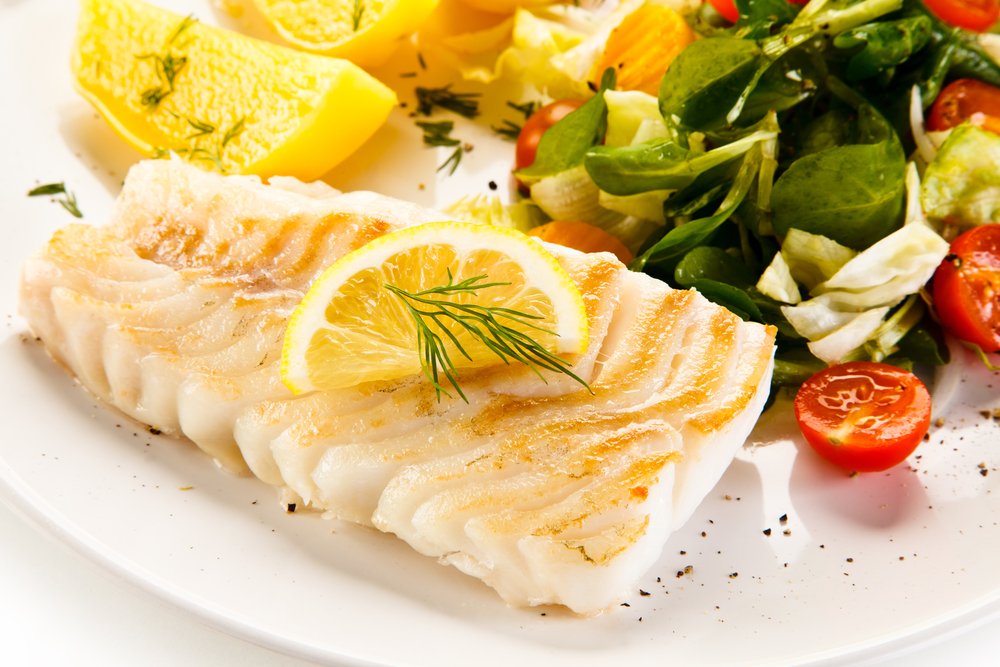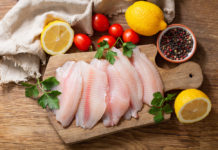As the weeks since New Year’s Day pass you by, you may be finding it more and more difficult to stand by your New Year’s healthy diet resolutions. Approximately 80% of resolutions fail by the second week of February, so the odds of you losing motivation around this time are pretty high. But where there’s a will (and a little bit of help), there’s always a way.
If your New Year’s resolution was to lose weight or simply embrace a generally healthier lifestyle, incorporating more lean, nutrient-dense seafood into your diet might be the boost you need to make this resolution a reality.
Find out how adding more seafood into your diet, as well as making other easy changes, can help you achieve your goals and feel better about the effort that goes into diet, exercise and conscious wellness.
1. Lean Protein Makes You Fuller Longer
Fish are typically high in protein and relatively low in calories, carbs and saturated fats. One shining example of a seafood full of protein is Tilapia. A 4-ounce Tilapia fillet contains just 90 calories and is packed with 21 grams of protein, 0 grams of trans fat and 0.5 grams of saturated fat. Tilapia is also an excellent source of potassium, iron and vitamin C.
By incorporating lean seafoods like Tilapia as a baseline protein for your meals, you can feel still feel full on fewer calories. This limits the risk of snacking and unraveling your hard work.
2. Simpler Meals Mean Less (Bad) Fats and Carbs

Fish-centered meals are typically complemented by simple herb and olive oil seasonings, so choosing seafood over red meat helps you to avoid the sodium-laden, fatty marinades that are often paired with meat dishes. Think more lemon juice, olive oil, garlic, rosemary and salmon instead of butter, salt, soy sauce, brown sugar and beef. If you need a little inspiration, check out these baked Tilapia recipes.
The same idea applies for sauces. Instead of using trans fat-based sauces, try topping seafood fillets with lighter sauces like tzatziki sauce, hummus or olive tapenade.
3. Healthy Omega-3’s Increase Your Overall Health
Not all fats are created equal. While you may have heard about the dangers of trans fats, moderate consumption of polyunsaturated fats like omega-3’s is considered a healthy addition to your diet.
Omega-3 fats, which are prevalent in seafoods like tuna, salmon and sardines, are heart-healthy and can boost your overall satiety. Fish are one of the best sources of omega-3’s, so making seafood your go-to protein can go a long way towards helping you achieve your goals.
Not only do omega-3’s boost overall feelings of fullness, they are also key for brain development and cell turnover. They have also been shown to increase HDL (good cholesterol) levels and decrease triglycerides and inflammation.
4. Seafood Pairs Well with Vegetables for Lighter Meals

Keep yourself motivated by making every component of your plate reflect a healthy, whole-foods approach. Up your daily intake of seafood by pairing it with vegetables. This will go a long way to help you stick to your healthy goals.
Consume water-dense vegetables like eggplant, spinach, bell peppers and broccoli alongside protein-based fish like Tilapia to keep you feeling fuller for longer. With such an array of seafoods that pair well with vegetables, it can be a satisfying change to implement.
Sticking to a more seafood-based diet can benefit your health in a number of ways, so we encourage you to ride out your healthy eating resolution. If you need more motivation in the coming months, try our Seafood Challenge and reap the benefits of a fishy-heavy diet today.
Want to discover more ways to pair fish with vegetables? Have a look at these 4 sneaky tips to incorporate more greens into your cooking.
Photo Credits: LightField Studios / Shutterstock Inc., Jacek Chabraszewski / Shutterstock Inc., subhakitnibhat kewiko / Shutterstock Inc






